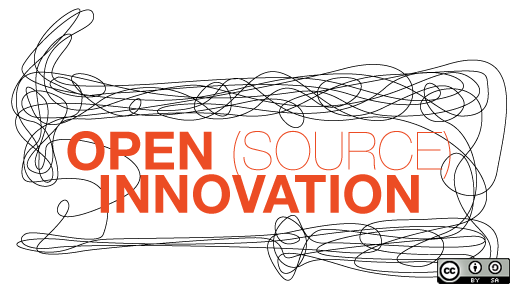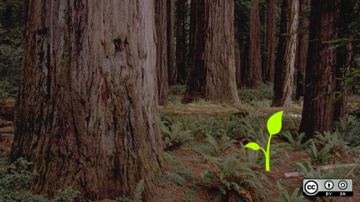We've said that open organizations are places where the best ideas win. But what are "the best" ideas, and where do they actually come from? And how do our answers to these questions shape how we reward contribution in an open organization?
Matt Ridley's recent book, How Innovation Works, may offer some insights. In this three-part review of the book, I'll look at the relationship between innovation and open organization principles. How do they interact and intersect? How might embracing open organization principles encourage innovative projects and products—and how might it refine our thinking about "invention" and "innovation" in the first place?
Sequential collaboration
Let's begin by reviewing some important terms.
Consider the definitions of both "inventions" and "innovations." One (an invention) involves coming up with a better idea, concept, or inspiration. The other (innovation) suggests developing a new product or service (often from an invention) that actually creates some benefit for the people that use it. Most of the time, Ridley argues, we tend to recognize great inventions and innovations as the products of just one person, a sole creator. That person, then, gets all the credit.
But in most cases, Ridley notes, working behind that sole creator (often out of the spotlight) are contributors, supporters, and sometimes major influencers that made these discoveries possible. These contributors often receive little or no credit for the breakthrough. Many aren't compensated for that contribution (some die penniless). When the best ideas may win, everyone who contributed to those ideas don't always win—and their contributions may never be exposed or recognized.
So in any discussion of meritocracy, we have to remember all those who supported the effort behind the scenes.
Most innovations, Ridley strongly believes, are gradual, incremental, and collective. Throughout How Innovation Works, he provides example after example of this kind of "sequential collaboration." It tends to work like this:
- Someone has an idea.
- Very soon after—maybe one year later, maybe 10 years or even 50 years later—someone studies that idea and improves it.
- Someone entirely different picks up that information and puts together a prototype technology utilizing that idea—and barely gets the prototype to work.
- Another person starts working on the prototype and improves its performance to the point where it could be usable.
- Another person takes the hand-made prototype and sets up a simple production line for it (reducing the cost of bringing the invention to light).
- Finally, someone else improves on the manufacturing and the product itself, further reducing costs, so it is accepted on a larger market scale. This person makes the innovation accessible on a mass scale—and often receives credit for the "discovery."
This sequence is extremely common, as Ridley shows.
Creating conditions for innovation
Time and time again, Ridley highlights how innovation generally receives great praise, but specific breakthroughs are often strongly (but quietly) discouraged. He shows how a basic fear of new projects, methods, processes, and products can hamper innovation. "We throw obstacles in the way of innovators, on behalf of those with a vested interest in the status quo," he writes in How Innovation Works. "History shows that innovation is a delicate and vulnerable flower, easily crushed underfoot, but quick to regrow if conditions allow."
Building organizations on open principles can help us create the conditions for innovation to flourish—and they can do it in a way that better appreciates and accounts for the iterative and collaborative nature of innovation itself.
But like innovation, open organizations and their guiding principles present something potentially disruptive—and therefore something people may fear.
Let's examine each principle more closely in this way:
Transparency: Could a fear of giving information to the "wrong" person be making people reluctant to share? Transparency in most cases is productive and can create mutual benefits, but people need to consider and evaluate those benefits in advance of sharing something. Nevertheless, a preference for transparency can create a culture where various contributions to an idea get documented, highlighted, and spotlighted—an antidote to the "lone creator" image so common in innovation stories.
Inclusivity: Could a fear of including certain people in your working group, team, or community be hindering your work? Perhaps you or your team resists approaching people who seem different from you. Because innovation is iterative and only succeeds when people bring multiple perspectives to bear on a problem, a more inclusive team can establish better conditions for innovation.
Collaboration: Could raising uncomfortable subjects be so scary that staying quiet is preferrable instead? True collaboration is built on trust, and because innovation is the product of collaboration far more often than we tend to admit, building collaborative trust is critical. Open organizations set conditions for people to work through uncomfortable conversations in very rewarding ways. On top of that, collaborating is simply hard work. Putting in the effort, however, could pay great dividends.
Adaptability: Could admitting you are on the wrong track and pivoting in another direction be so uncomfortable that you just ignore the problem—or, worse yet, just give up? The path to innovation isn't linear, and open organizations can help us see this. They're much better at failing quickly and effectively, gathering data from those failures, and moving on. They're also teams that have the humility to recognize they're going in the wrong direction.
Community: Could a fear of "losing control" keep you from approaching other people to help you address a given issue? Do people in the organization feel "safer" addressing issues by themselves? Open organizations can combat this fear by emphasizing communal norms and values—by stressing shared goals. Open organizations are great for getting the best talent into their team or community. This only makes the team more productive.
In part one, we've seen how innovation frequently occurs, viewed common sources of resistance to it and explored how open organizations can excel at fostering ideal conditions for innovation. But what exactly are those ideal conditions? In the next part of this review, I'll discuss them.







Comments are closed.